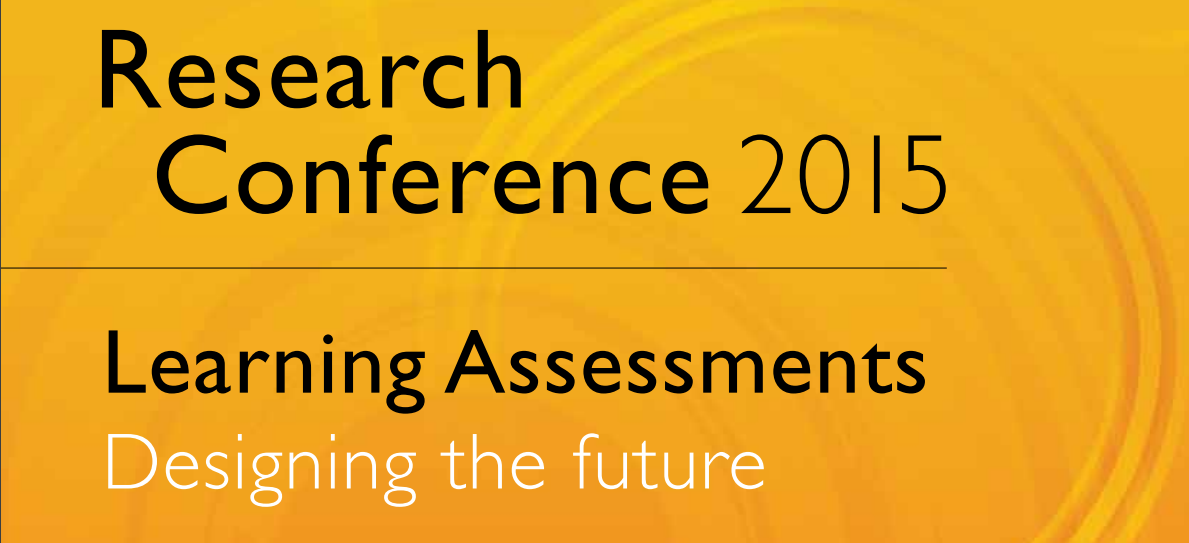
Monday 17 August 2015
Start Date
17-8-2015 2:45 PM
End Date
17-8-2015 4:00 PM
Subjects
Science teaching, Measures, Measures (Individuals), Evidence based practice, Student assessment, Evaluation methods, Evaluation criteria, Performance, Science achievement
Abstract
A key challenge in shaping science learning for the future will be to develop new measures of learning that take into account what it means to be proficient in science (Pellegrino, 2013). The emergent view on proficiency, grounded in learning sciences research, emphasises using and applying knowledge in the context of disciplinary practice. Referred to as knowledge-in-use, this perspective on science proficiency is a centrepiece of the United States’ National Research Council’s (NRC) Framework for K–12 Science Education (NRC, 2012), embodied in the new US national standards (NGSS Lead States, 2013) and emphasised in the recently released NRC report on developing assessments to measure science proficiency (Pellegrino, Wilson, Koenig & Beatty, 2014). Central to this view is that disciplinary content — both disciplinary core ideas and crosscutting concepts — and practice should be integrated. This would mean that as students apply knowledge to make sense of phenomena and solve problems, they deepen their conceptual understanding of content as well as their understanding of how to do science. This paper provides a brief overview of a systematic and scalable approach for designing assessment items to measure student proficiency with new science learning goals that blend disciplinary core ideas and crosscutting concepts with practices. The assessment tasks are intended for formative use within classroom instruction. Drawing on prior research from assessment and curriculum design (for example, see DeBarger, Krajcik & Harris, 2014; DeBarger, Penuel & Harris, 2015), this paper presents such a design approach and considers implications of the overall work in this field.
Recommended Citation
Pellegrino, J. W. (2015, August 17). Measuring what matters: Challenges and opportunities in assessing science proficiency [Paper presentation]. Research Conference 2015 - Learning assessments: Designing the future. https://research.acer.edu.au/research_conference/RC2015/17august/15
Copyright Statement
Copyright Australian Council for Educational Research 2015
Place of Publication
Melbourne
Publisher
Australian Council for Educational Research (ACER)
ISBN
9781742862873
Geographic Subject
United States
Included in
Curriculum and Instruction Commons, Educational Assessment, Evaluation, and Research Commons, Science and Mathematics Education Commons
Measuring what matters: Challenges and opportunities in assessing science proficiency
A key challenge in shaping science learning for the future will be to develop new measures of learning that take into account what it means to be proficient in science (Pellegrino, 2013). The emergent view on proficiency, grounded in learning sciences research, emphasises using and applying knowledge in the context of disciplinary practice. Referred to as knowledge-in-use, this perspective on science proficiency is a centrepiece of the United States’ National Research Council’s (NRC) Framework for K–12 Science Education (NRC, 2012), embodied in the new US national standards (NGSS Lead States, 2013) and emphasised in the recently released NRC report on developing assessments to measure science proficiency (Pellegrino, Wilson, Koenig & Beatty, 2014). Central to this view is that disciplinary content — both disciplinary core ideas and crosscutting concepts — and practice should be integrated. This would mean that as students apply knowledge to make sense of phenomena and solve problems, they deepen their conceptual understanding of content as well as their understanding of how to do science. This paper provides a brief overview of a systematic and scalable approach for designing assessment items to measure student proficiency with new science learning goals that blend disciplinary core ideas and crosscutting concepts with practices. The assessment tasks are intended for formative use within classroom instruction. Drawing on prior research from assessment and curriculum design (for example, see DeBarger, Krajcik & Harris, 2014; DeBarger, Penuel & Harris, 2015), this paper presents such a design approach and considers implications of the overall work in this field.


Comments
Jo Earp interviewed Jim Pellegrino for Teacher magazine. Audio files and transcript available at Jim Pellegrino on shaping science learning.